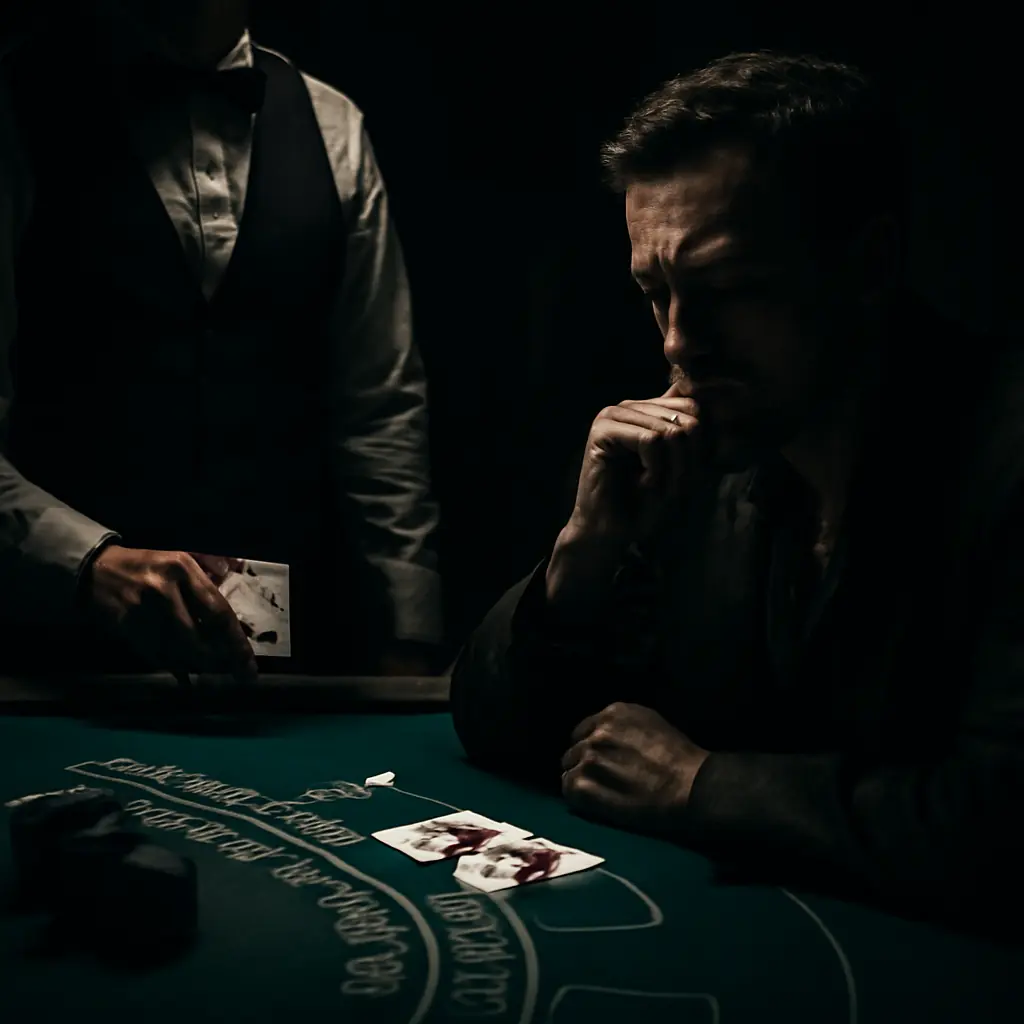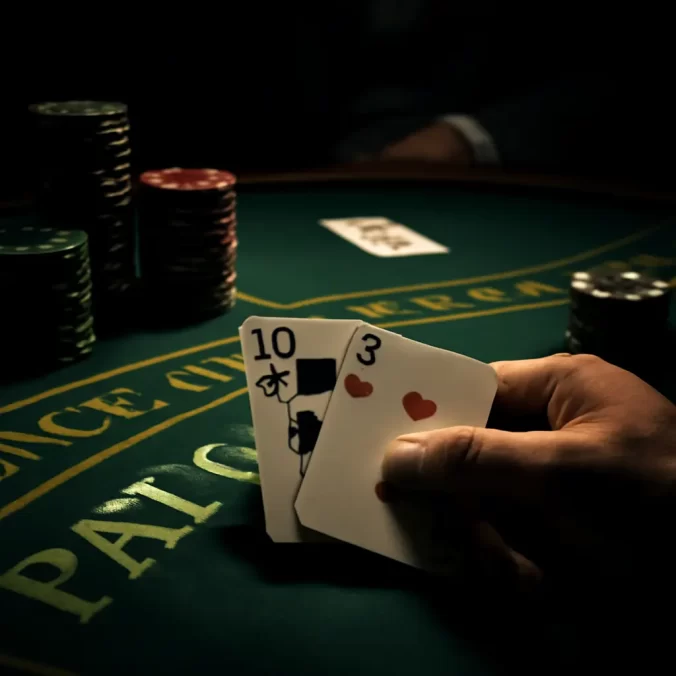Introduction
Ever been at the blackjack table, staring down at your measly 12 while the dealer confidently flips over a 3? A wave of uncertainty probably washed over you. Is this a textbook “hit” situation according to basic strategy, or is there more to the story? It’s a moment where even seasoned players pause, questioning the seemingly straightforward rules of the game.
Many blackjack enthusiasts blindly follow basic strategy charts, believing them to be the holy grail of optimal play. But what happens when those charts lead you astray? What if the “correct” move isn’t always the best move in every single scenario? This is where the subtle complexities of blackjack reveal themselves – and the importance of tactics such as card counting comes into play.
The truth is, there’s a precise answer to the 12 vs 3 dilemma, but it requires a deeper understanding of the game beyond simply memorizing a chart. Prepare to ditch the dogma and discover when deviating from basic strategy can actually boost your odds at the blackjack table.
The Basic Strategy Foundation: Standing Firm on 12 Against a Dealer’s 3
Blackjack’s allure lies in its blend of chance and strategy. While luck plays a role, employing a sound strategy can significantly improve the odds. One of the most crucial, and sometimes counter-intuitive, plays in basic strategy is knowing when to stand versus hit, especially concerning the hand of 12.
According to blackjack rules, the core principle of basic strategy advises players to stand on a hard 12 when the dealer’s upcard is a 3. This means refraining from taking another card, even though your hand is a relatively low total. It might feel unsettling to stand on such a low number, but there’s a calculated logic driving this decision.
The rationale hinges on the dealer’s bust potential. When a dealer shows a 3, they have a higher probability of busting when forced to draw to 17. By standing on 12, you’re essentially letting the dealer take the risk of drawing cards that could exceed 21. While the dealer could very well make their hand, the math favors the player in the long run when standing.
In the unpredictable world of gambling, the house always has an edge. But using basic strategy is a way to minimize this edge. While there are always exceptions depending on card counting and specific table rules, implementing this basic strategy—standing on 12 against a dealer’s 3— will guide you to make mathematically sound decisions, and improve your chances during a blackjack game.
Why Basic Strategy Isn’t Always Best: Introducing the Count
Basic blackjack strategy provides a solid foundation, but it’s just the beginning for players seeking an edge. Card counting, a technique often portrayed in movies, is a real-world method that can shift the odds in the player’s favor by altering optimal play.
At its core, card counting involves tracking the ratio of high cards (tens, face cards, and Aces) to low cards (2-6) remaining in the deck or shoe. This running tally, when converted to a “true count” by dividing by the number of decks remaining, provides an estimate of the current composition of the deck. The true count is paramount in order to turn basic strategy on its head.
A positive true count indicates a higher concentration of high cards, benefiting the player. This is because high cards improve the player’s chances of hitting blackjack and increase the dealer’s likelihood of busting. Consequently, a player might deviate from basic strategy. For example, with a significantly positive count, a player might choose to stand on 12 against a dealer’s 3, an action rarely advised under basic strategy. Understanding and utilizing the count is a component of blackjack strategy requiring risk management.

When to Hit: The Positive Count Threshold
In blackjack, card counting isn’t just about knowing the count; it’s about knowing when to use that information to deviate from basic strategy. One crucial decision point is knowing when to hit on a hand of 12 against a dealer’s upcard of 3. Basic strategy dictates standing in this situation. However, a positive count can dramatically shift the odds.
The generally accepted true count threshold for making this change– hitting 12 vs. 3– is +3. This means that when your true count reaches +3 or higher, you should abandon basic strategy and hit.
The rationale behind this deviation is simple: a higher positive count indicates a greater concentration of high cards (10s, face cards, and Aces) remaining in the deck. This increases your likelihood of improving your 12 without busting, while simultaneously increasing the dealer’s chances of busting when they are forced to take additional cards. Understanding this positive count threshold is vital for maximizing your advantage when employing card counting strategies in blackjack.
The Math Behind the Decision
The counterintuitive play of hitting 12 against a dealer’s 3 in blackjack, when the count is positive, isn’t just a gambler’s whim. It’s rooted in solid mathematics and supported by extensive blackjack simulation data.
Expected value is the key concept here. It represents the average outcome of a particular decision over the long run. Sophisticated computer simulations, analyzing millions of blackjack hands, have revealed that the expected value of hitting 12 against 3 becomes positive when the card count reaches a certain threshold. This means that, on average, a player will make more money by hitting in this situation than by standing.
The reasoning lies in the altered probability of drawing high cards. A positive count indicates that the remaining deck is rich in 10s and Aces. These cards are beneficial to the player, not only for making strong hands but also for potentially busting the dealer. Hitting 12 risks a bust, it’s true. However, with a deck saturated in high cards, the increased chance of the dealer busting outweighs the risk of the player busting. The house edge, normally in the dealer’s favor, shifts towards the player in these specific, advantageous scenarios. The advantage arises because you are playing this strategy when the remaining cards are dense with high-value cards.
Common Mistakes and Pitfalls
Venturing into the world of card counting and deviations can be exhilarating, but it’s also a minefield of potential errors. Many players, eager to beat the house, stumble into common traps that can quickly deplete their bankroll. Understanding these pitfalls is crucial to success.
One of the most frequent card counting mistakes is miscalculating the true count. An inaccurate count forms the basis for all subsequent decisions. Even a small error can skew the odds against the player, leading to incorrect deviations and poor betting choices. It is important to double-check calculations and maintain focus to minimize these errors.
Another deviation pitfall is over-betting. A favorable count does not guarantee a win—it simply indicates a higher probability of success. Players should avoid the temptation to bet excessively large amounts, even when the count seems promising. Variance remains a significant factor in blackjack, and even the best card counters experience losing streaks. Bankroll management is as important as knowing when to deviate.
False confidence is also a silent killer. Some players, after experiencing initial success with card counting, become overconfident in their abilities. This can lead to reckless betting, sloppy play, and a failure to properly manage risk. It is important to remain disciplined and objective, constantly evaluating your performance and adapting to changing circumstances.
Finally, attempting to learn card counting without a solid grasp of basic strategy is a recipe for disaster. Basic strategy is the foundation upon which card counting is built. Players who haven’t mastered basic strategy will make fundamental errors that negate any advantage gained from card counting. Before attempting deviations, ensure your basic strategy knowledge is perfect.

Mastering the Deviation: Practice and Application
Card counting is not just about keeping a running tally; it’s about knowing when and how to deviate from basic strategy based on the count. To truly master the 12 vs. 3 deviation, consistent practice is essential.
Blackjack Training: Blackjack simulation software is invaluable. These programs allow you to play thousands of hands in a short amount of time, tracking your accuracy and decision-making skills. Look for software that specifically allows you to focus on deviation drills, highlighting only those situations where deviating from basic strategy is necessary.
Remembering the Count: Many card counters struggle with memorizing the count thresholds at which deviations become profitable. One effective strategy is to use mnemonic devices or create mental associations. For the 12 vs. 3 rule, try associating the number 12 with a specific image or phrase that helps you remember the correct action based on the count.
Casino application : When you’re ready to implement your strategy in a live casino, start small. Begin with the basic strategy, add the counting and then focus solely on mastering the 12 vs. 3 deviation at low stakes. This allows you to build confidence and refine your skills. Then, start using the deviations learned with bigger bets.
Here’s a suggested step-by-step implementation guide:
- Learn Basic Strategy: Master the foundational plays.
- Learn Counting: Practice keeping a running count.
- Practice at Home: Use simulation software to drill deviations.
- Low Stakes at Casino: Implement your strategy gradually in a real casino environment.
With dedication and the right tools, mastering the 12 vs. 3 deviation can significantly enhance your blackjack strategy.
Conclusion
Mastering the nuances of blackjack, including when to deviate from basic strategy, can significantly improve your odds. The 12 versus 3 scenario is a prime example; correctly hitting, based on the count, is a game-changer. By understanding card counting and applying this specific deviation, players gain a tangible edge. Embrace continuous learning, refine your blackjack skills, and start implementing this strategy to see the difference firsthand.


Leave a Reply